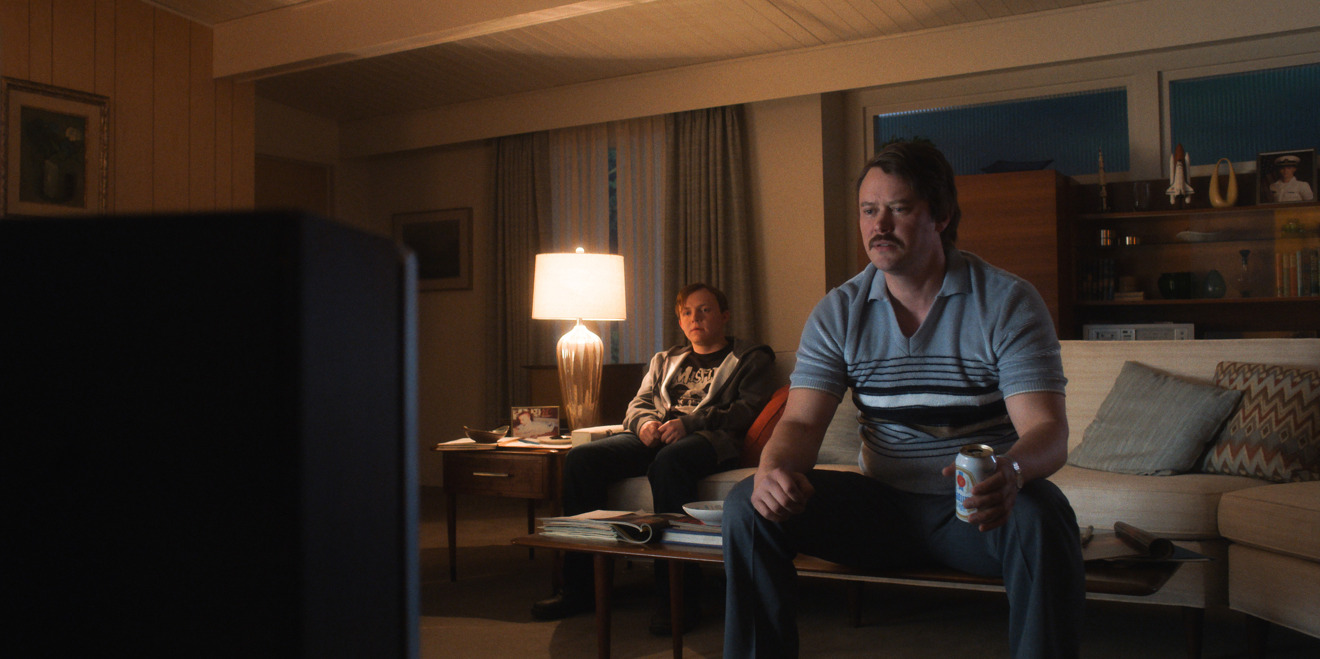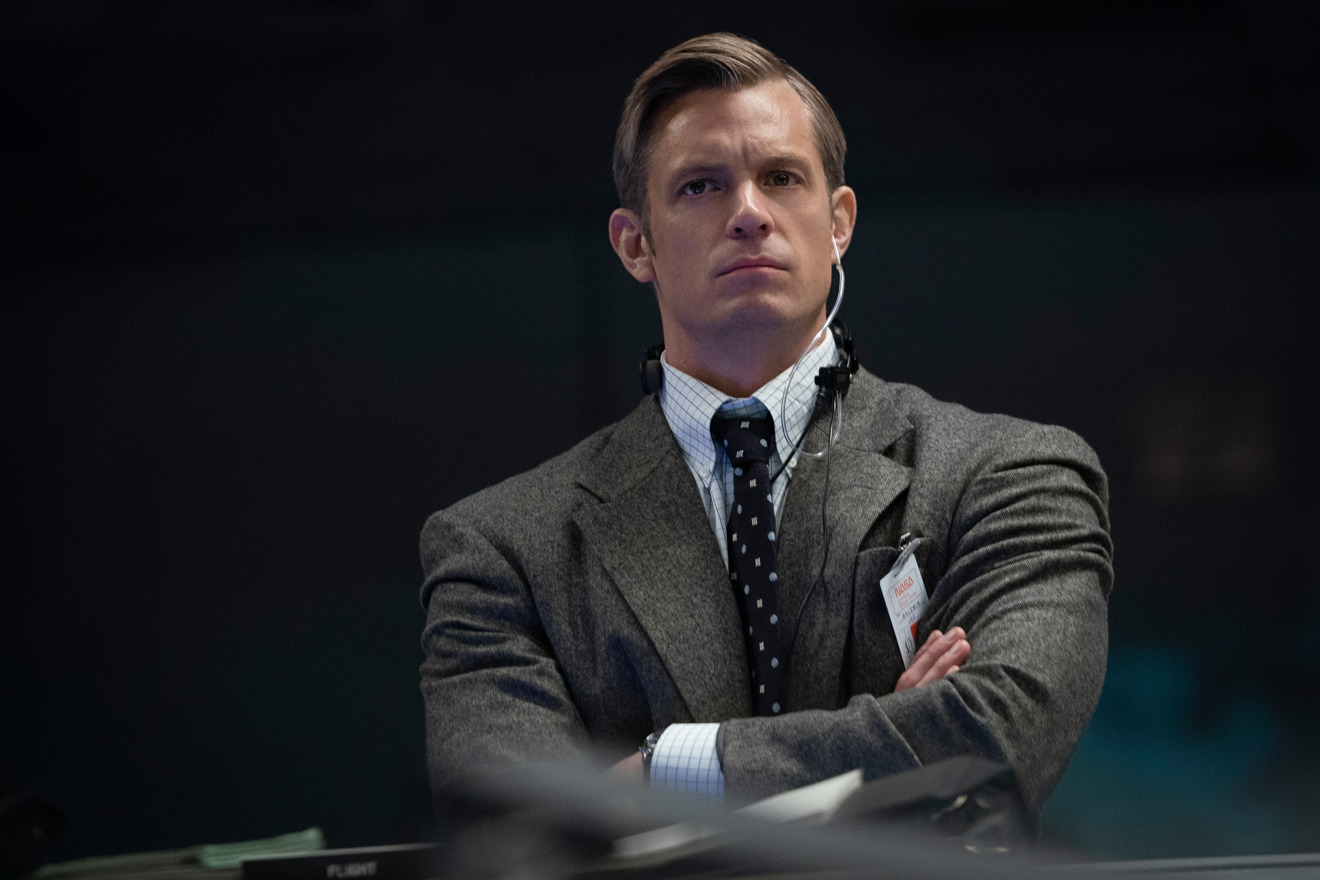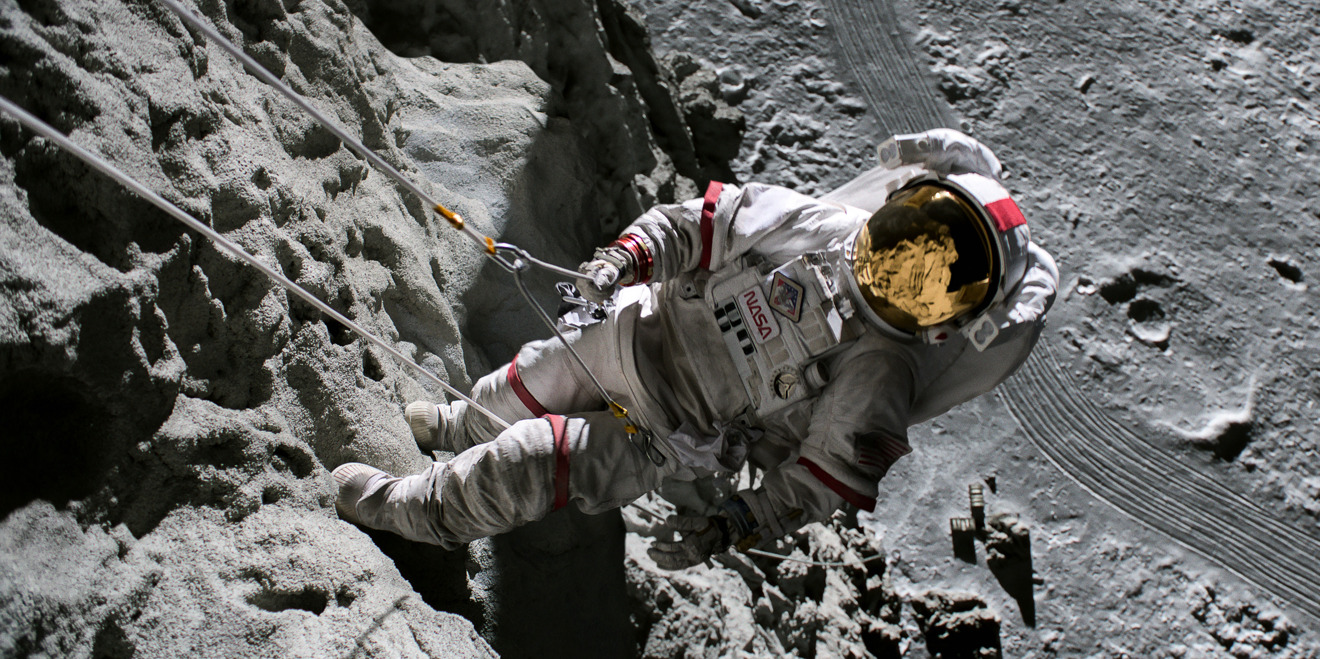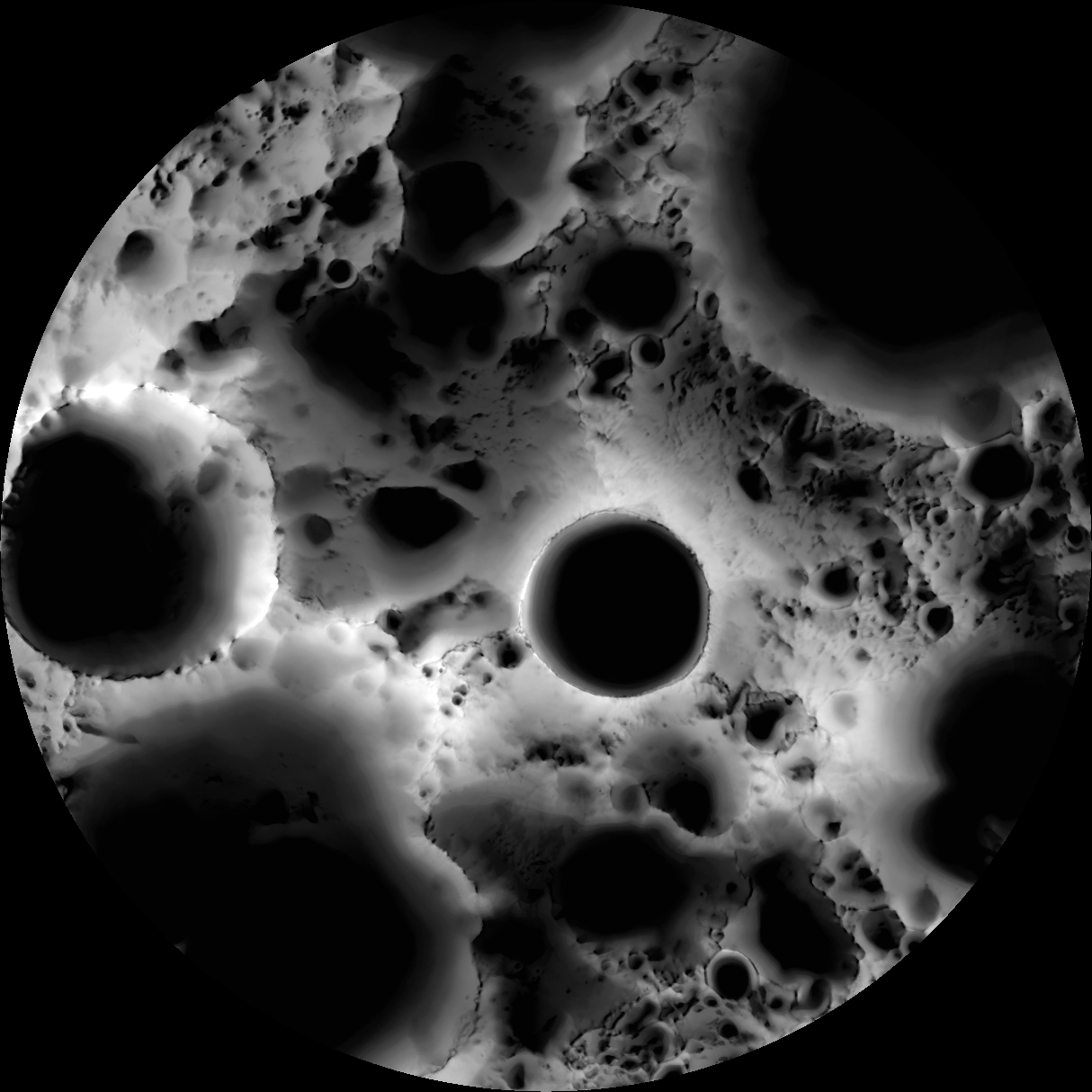Alternate-history drama "For All Mankind" speeds forward in time, to a tense '80s Cold War on the moon.
In an age of many different shows about the past and present of the space program, Apple's entry, "For All Mankind," has been one of the more creatively successful ones. The show, created by "Battlestar Galactica" veteran Ron Moore — along with Matt Wolpert and Ben Nedivi — is an alternate history take on the Apollo program, one that combines familiar tropes of the genre with some intriguing historical what-ifs.
The first season, set between the late '60s and early '70s, explored what might have happened if the Soviets beat the U.S. to the moon and the space race had continued for much longer. The premise followed that idea down several fun historical rabbit holes, such as Ted Kennedy, after skipping that fateful trip to Chappaquiddick, getting elected president in 1972.
The initial season of "For All Mankind" debuted on Apple TV+'s launch day in November of 2019. The aesthetics, whether at NASA headquarters or in space, were essentially identical to similar places in space program movies like The Right Stuff, Apollo 13 and First Man.
But the show had a great deal of fun with the alternative history conceit. Most of the cast consisted of fictional characters, but it also incorporated some real people, with veteran character actor Chris Bauer playing Deke Slayton, who lived a very different life in "For All Mankind" — and experienced a very different death — than that of the real Slayton.
There were adventures in space, yes. But the show was — and remains — much more of a human drama than a sci-fi show.
Flash Forward
 Michael Dorman in season two of "For All Mankind," premiering globally February 19, 2021 on Apple TV+.
Michael Dorman in season two of "For All Mankind," premiering globally February 19, 2021 on Apple TV+.The second season of "For All Mankind" follows the first season's premise to some intriguing directions. The ten-episode season debuts February 19, with one episode debuting each Friday through April 23; I've seen the first three.
As hinted at by the end of the first season finale, the new season begins with a time jump to the early 1980s. It kicks off with a montage letting us know what the butterfly effect of its alternate reality wrought, including the election of Ronald Reagan in 1976, and an Iranian hostage crisis that ended much more quickly than the real one did.
This leads us to 1983 when both the United States and the USSR have established bases on the moon, leading to a microcosm of the Cold War and the nuclear arms race that's taking place on the lunar service.
The end of the first episode features a really terrific set-piece, set on the moon. Most of the show, however, takes place back on Earth, as we catch up on the first season's characters a decade later. And what mostly emerges, in the second season, is a human drama that's compelling independently of the alternate-history gimmick.
Gordo and Baldwin
 Joel Kinnaman in season two of "For All Mankind," premiering globally February 19, 2021 on Apple TV+.
Joel Kinnaman in season two of "For All Mankind," premiering globally February 19, 2021 on Apple TV+.Gordo, portrayed by Michael Dornan, of Amazon show "Patriot," is overweight and wracked with PTSD from his breakdown in the first season and is facing the prospect of returning to space. This comes as less-than-welcome news to his former wife Tracy (Sarah Jones), who wants no part of being an "astro wife," as she says in one of the episodes.
Meanwhile, Joel Kinnaman's Edward Baldwin is behind a desk and also dealing with strife at home. And Wrenn Schmidt's Margo Madison is the new earthbound boss.
Taking directions
The show looks and sounds about the same as in the first season, with the exception of many 1980s pop standards on the soundtrack. Moore remains the showrunner, and the series repeats its pattern from the first season of having five different directors each direct two episodes at a time.
One of them is Andrew Stanton, the longtime Pixar hand who directed A Bug's Life, Finding Nemo, and WALL-E, and is the director of the new season's third and fourth episodes.
Multimedia 'Mankind'
Apple clearly believes in the possibilities of "For All Mankind," even beyond the third-season renewal. It's gotten the type of multimedia push not previously granted to Apple TV+ shows so far, as it's the subject of a podcast, and also an augmented reality "experience."
"For All Mankind," like "Dickinson" before it, was renewed for a third season even before the second one premiered. And while "Dickinson" finished up second season filming before the pandemic started, "For All Mankind" had to take a months-long break before resuming last August.
The series has succeeded in building on the successes of its first season and come on strong out of the gate in its second.
 Stephen Silver
Stephen Silver








-m.jpg)






 William Gallagher and Mike Wuerthele
William Gallagher and Mike Wuerthele
 Andrew Orr
Andrew Orr

 Amber Neely
Amber Neely
 Mike Wuerthele
Mike Wuerthele
 William Gallagher
William Gallagher











22 Comments
I’m still hoping the astronauts and cosmonauts get together and start a war of independence from earth.
The first thing I'm going to do is find out if there's anyone in this series with the surname Calvin. If so, then there's guaranteed to be a linkage between this series and the Foundation Series, which is coming up soon. Although the Foundation timeline begins in 1982 when Susan Calvin is born. She doesn't actually do anything important until 2007, so we may not be seeing her introduced in this season.
I watched Episode 1 twice, looking for easter eggs the second round. I did see "Site Madison" on a screen which means one of the landing sites was named after Margo Madison.


Another curious thing I noticed was a General Bradford who said to Madison, "Must be nice to have your own revenue stream." It made me think that her "new revenue stream" might be the minerals they return from the Moon and sell them on the open market to fund NASA's programs.
The General also said "Everyone's still on edge after what happened in Berlin ... (almost a year ago)". The date of this episode was Oct 22, 1982. I googled these words and couldn't find a real life episode in Berlin that matched this description.
Madison's aide told her about developments in "microgravity silicon growth patents" (as shown in the captions) which unfortunately she mispronounced as "microgravity silicone growth patents." I guess Hollywood is still more concerned about silicone than silicon. Hollywood still makes this mistake.
There was a reference early in the show to being taken out to schmooze at a chili restaurant, then also a reference later to "is that chili on your breath?" I didn't get the meaning until my first rewatch.
There was a bit of scientific nonsense. If the proton stream took 20 minutes to reach the earth from the Sun, travelling at 30% the speed of light, then we wouldn't have known about it for the first 7+ minutes because that's how long it takes light to reach Earth from the Sun. So that means we'd have only a 13 minute warning. Clearly the writers really don't understand what the speed of light means. But even worse than that, if it took 20 minutes to reach Earth, at 30% the speed of light, it wouldn't have taken 3 extra minutes to reach the Moon, as the episode showed (although their computer screens showed only 24.5 seconds elapsing), but only 3.0 seconds. I guess the speed of light is under 1/8th its correct value between the Earth and the Moon, or 1/50th its correct value based on the screen time. It's also worth noting that if the Moon was directly behind the Earth, as their screens shows, then the Moon would actually be within part of Earth's protective shield called the Magnetosheath which eclipses the Moon when it is anywhere behind the Earth. So basically this whole scenario was scientific claptrap.
You can see the magnetosheath in the image below. It covers the Moon when it's behind the Earth (the Moon is far to the right of the image below). The exact distance of the magnetosphere on the lee side of the Earth is still unknown, but it is expected to be 20 times the distance of the Earth to the Moon. That's more than enough to protect the Moon whenever it is behind the Earth.
It's also worth noting that the real US astronauts never travelled to the Moon when the Moon was inside the magnetosheath, largely because NASA didn't know how the magnetosheath might impact their electronics. So in real life, the dangers shown in this episode would happen on the Moon twice per month: once when the Moon enters the magnetosheath, and once when it exits a day later. In the future, the magnetosheath is one of the main problems facing a permanent Moon base.
But there's even one more major error in this episode. The bottom of Shackleton crater never sees the Sun, although they've got the bottom of the crater in this episode fully lit, a mere minutes after the Sun rises to light up the rim of the crater. The reality is that the rim of the Shackleton crater sees light nearly 100% of the time, and the base of the crater never sees light, despite what we see in this episode. Here's a diagram from the LRO to illustrate that. When a pixel is bright white, that means it is sunlit 100% of the month. When it's black, it means that area never receives sunlight (it may receive small amounts of indirect sunlight.)
Bonus problem: Molly was unable to budge a 200kg lunar rover when it would appear to weigh only 33kg on the Moon (much less than a human on Earth) since the Moon has 1/6th of Earth's gravity. She also struggled to lift a 100 kg astronaut which would appear to weigh only 16 kg on the Moon. That's like carrying an office chair on Earth. Even with a 16kg astronaut, her total weight would be only 32 kg because she's also 1/6th of her own weight. There wouldn't be a struggle at all. It would be a complete breeze carrying two or three astronauts at the same time if you could get a grip on them. Even carrying five astronauts you would still feel the exact same weight as you do standing on Earth (excluding the weight of the spacesuit, which also weighs 1/6th.) This episode was a travesty of science.
Lastly, it seems unlikely that they should have to shelter for 3 hours for something that travels at 30% the speed of light. By that time, the wave front would have hit Jupiter. Three hours is an overreaction. Three minutes would probably suffice.
Apple TV+ still feels like a very contrived effort at providing a streaming service. I hope Apple will eventually be successful with it.